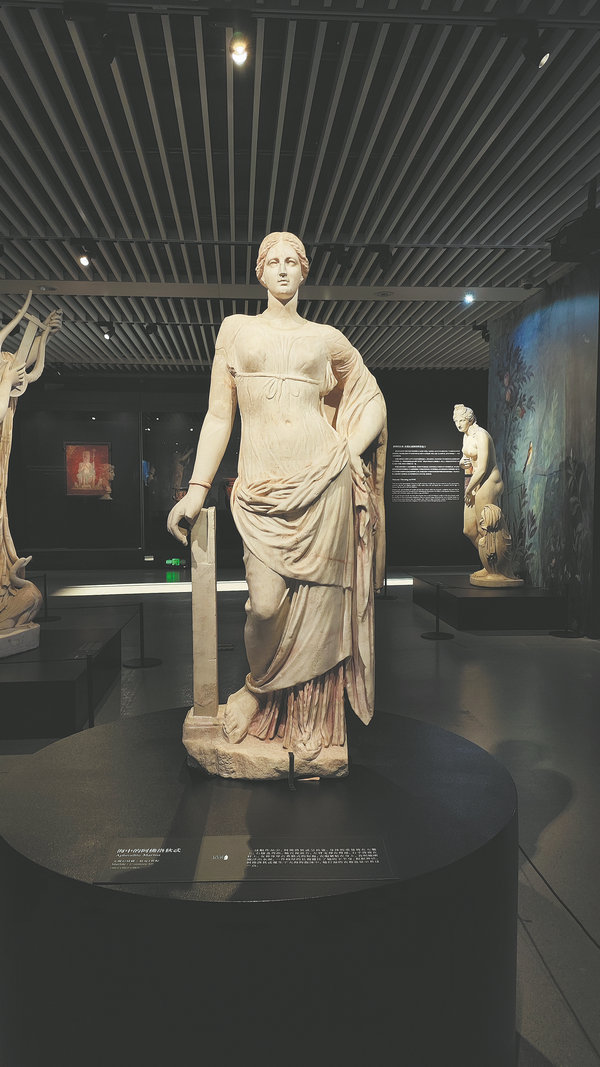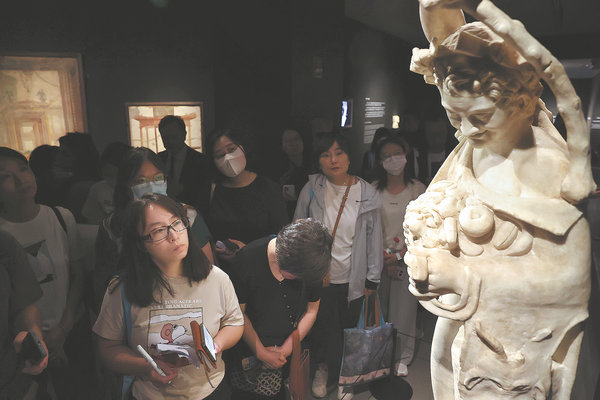

Portrayal of myths
Time has erased the names of the artists that made them, but the anonymity of these pieces does not diminish the immortality of their beauty.
Greek and Roman mythology is a key theme of the exhibition. The goddess of love and beauty is one of the highlights. Aphrodite Marina, a marble statue from the first century AD, vividly portrays the moment of the goddess' birth, as she steps elegantly out of the sea. That image had a lasting influence on Western art over the course of the following centuries, Qian says.

Another marble statue, Ganymede and the Eagle, may inspire people to remember Homer's description of the divine hero as "the loveliest born of the race of mortals", while the exquisitely carved relief, featuring Trojan prince Paris, his lover Helen, and Aphrodite, seems to keenly capture the moment that sparked the Trojan War, the classical inspiration for many other artistic masterpieces throughout European history.
"The flesh and blood of each mythical figure reveals the deep layers and profound connotations of the grand theme of love," Qian explains. "Thus love, in its many different representations, occupies a central place in the ancient Greek and Roman systems of culture and thought."
Other than the worship of mighty deities, the exhibition also aims to present the Romans' love of the good life. Dionysus, the Greek god of wine and good times, who was known to the Romans as Bacchus, is probably the perfect reflection of earthly pleasures. His image is frequently found on painted pottery from Pompeii.

The god was also considered the inventor of theater. As a sign of representation of humanity, theatrical performances in ancient Greece were an integral part of the festivals held in his honor, Qian adds.
The dinnerware, oil lamps, and garden decorations on display reflect a wider perspective of Roman life, but the most touching exhibit may be the reconstruction of a courtyard. Multimedia installations take visitors back to the time of the eruption, while the broken 2,000-year-old frescoes and marble components around the courtyard create an immersive experience, blurring the sense of time and space.
The exhibits in the courtyard are simple, a relief of a blacksmith and ordinary landscape paintings. They are not ostentatious, but their everyday appearances magnify the shock that eruption had upon what started out as an otherwise unremarkable day in Pompeii.
During excavations, different facets of this legendary city were gradually revealed by archaeologists' shovels, from architectural structures to frescoes and jewels, and even "freshly" baked bread.
"Love, luxury, and beauty are all metaphysical themes," says Massimo Ambrosetti, Italian ambassador to China. "But when you have an exhibition with these themes as the main thread, we recognize the importance of culture and arts in our life. … This exhibition also reminds us of the significance of exchange among ancient civilizations, like Italy and China."